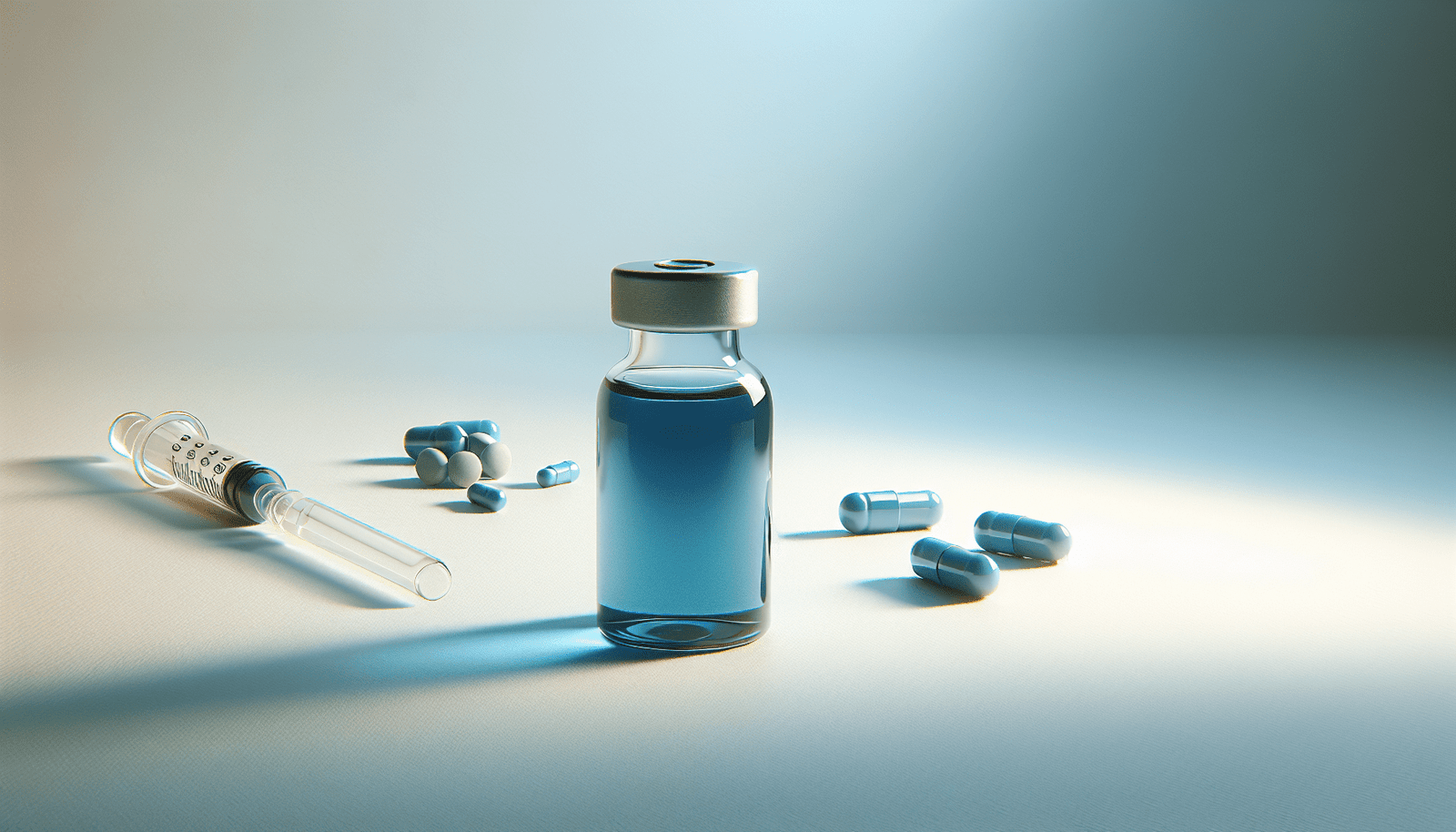
Have you ever heard about Methylene Blue? You might be wondering if it’s just another health trend or something more substantial. There’s a growing buzz around it, and it may have piqued your curiosity. Let’s take a closer look at what Methylene Blue really is, its history, and how it’s being used in contemporary wellness discussions.
What Is Methylene Blue?
Methylene Blue is a synthetic dye that has been around since the late 19th century. Originally created for textile industry use, it quickly found its way into various medical applications. It’s not just any dye; its chemical properties have made it a valuable tool in several fields, particularly in medicine and biology.
In simpler terms, Methylene Blue helps to color things so they stand out, but its significance goes well beyond just being a dye. It acts as a photosensitizer and has been used in treatments for malaria, as a diagnostic tool, and even as a means of improving cellular function.
A Bit of History
Understanding Methylene Blue’s history can provide context to its current popularity. In the early 1900s, this blue compound was recognized for its medicinal value. It was employed to treat conditions like methemoglobinemia, a blood disorder where an abnormal amount of methemoglobin forms, curtailing the blood’s oxygen-carrying capacity.
Moreover, Methylene Blue played a crucial role in the world of microbiology, serving as a stain for microscopic examinations and helping scientists identify various pathogens. This history sets the foundation for why it’s being reconsidered today—not simply as a colorful novelty but a potentially beneficial compound for health and wellness.
The Science Behind Methylene Blue
So, what is it about the chemical structure of Methylene Blue that makes it attractive for wellness? Understanding its mechanism can shed some light. This compound contains a unique structure that allows it to accept and donate electrons. It has essentially become known for its properties related to redox reactions, making it a valuable antioxidant.
Antioxidant Properties
You might have heard that antioxidants are good for you. They help fight off free radicals that can cause cellular damage—think of them as the body’s defense team against oxidative stress. Methylene Blue is thought to offer some potential benefits in this regard, which is why some wellness advocates have started to promote it.
The idea is that consuming Methylene Blue, in appropriate doses, can help improve mitochondrial function. Mitochondria are the powerhouse of your cells, providing energy. Enhancing mitochondrial performance means you could feel more energized and alert. Imagine that!
Cognitive Function
In addition to its mitochondrial benefits, Methylene Blue has been linked to cognitive enhancement. Some studies suggest that the compound has neuroprotective qualities. For instance, animal studies have indicated that Methylene Blue may help improve memory and learning processes, possibly owing to its role in mitochondrial function.
Have you ever experienced a foggy brain? The potential of Methylene Blue to aid cognitive function could be intriguing if you’re seeking clarity and focus during your day-to-day activities.

Potential Health Benefits
Now that you have a sense of what Methylene Blue is and how it acts on a cellular level, let’s explore its potential health benefits. Some claims can seem a bit bold, so it’s important to examine them with a critical eye. Here’s a breakdown of some of the main claims surrounding Methylene Blue.
Improved Energy Levels
One of the more favorable claims is that Methylene Blue can boost energy levels. As mentioned earlier, its ability to enhance mitochondrial function might also lead to improved aerobic performance. For individuals engaged in endurance sports or simply looking for a natural way to perk up, Methylene Blue might be an option, provided it’s used safely.
Mood Enhancement
Another compelling angle is the potential for Methylene Blue to elevate mood. The link between mitochondrial dynamics and mental health isn’t entirely new in scientific literature. While some preliminary studies suggest mood improvement, more extensive research is necessary to draw definitive conclusions.
If you’ve ever felt sluggish or down, the thought that Methylene Blue could help lift your spirits may be worth considering.
Anti-Aging Properties
A conversation around wellness is almost incomplete without discussing anti-aging. Some proponents claim that Methylene Blue acts as a fountain of youth due to its antioxidant capabilities. By potentially reducing oxidative stress, it could help delay certain aging processes.
That said, you should maintain realistic expectations. Aging is a natural process, and while certain compounds can help promote health and vitality, they aren’t miracle solutions.
Misconceptions and Concerns
As with any trending wellness tool, misinformation can muddle the conversation around Methylene Blue. It’s essential to separate fact from fiction, especially when it comes to health.
Safety and Dosage
One of the most significant concerns is safety. Methylene Blue is known to have side effects, especially at higher doses. Potential side effects can include nausea, headache, and various gastrointestinal issues. Since your well-being is paramount, consulting a healthcare professional before trying anything new is crucial.
Not a Cure-All
It can be easy to get swept up in the excitement surrounding new health trends, but it’s vital to remember that Methylene Blue isn’t a cure-all. While it may offer certain benefits, it shouldn’t replace a balanced diet, regular exercise, or necessary medical treatments.
Drug Interactions
If you’re currently taking any medications, especially antidepressants like MAOIs (monoamine oxidase inhibitors), there’s a significant risk of interaction. Methylene Blue can amplify the effects of these drugs, potentially leading to harmful conditions.
An open discussion with your healthcare provider can offer clarity on whether it’s suitable for your specific situation.

The Current State of Research
The interest in Methylene Blue has led to a wave of ongoing research. Many studies are investigating its potential in diverse areas such as neurodegenerative diseases, mood disorders, and beyond. Although initial findings are promising, much research is still in its infancy.
Studies Worth Noting
-
Neuroprotective Properties: Early studies have indicated that Methylene Blue could protect against neurodegeneration. It’s especially being investigated in cases of Alzheimer’s and Parkinson’s diseases.
-
Metabolic Health: Some researchers are exploring whether Methylene Blue can improve metabolic disorders, particularly in cases where mitochondrial dysfunction is a factor.
-
Mood Disorders: Research is delving into its possible application in treating mood disorders, exploring the intricacies between this compound and serotonin pathways.
Need for More Clinical Trials
While the results of existing studies are encouraging, it becomes essential to conduct more clinical trials to substantiate these claims. As you assess the validity of Methylene Blue’s health benefits, it’s wise to keep an eye on emerging studies to gauge what they reveal.
How to Use Methylene Blue Safely
If Methylene Blue has caught your interest and you’re considering it, knowing how to use it safely is critical. Here are some general guidelines:
Consult a Healthcare Professional
Before starting any supplement, including Methylene Blue, touching base with your healthcare provider should be your first step. They’ll guide you on whether it’s appropriate for your circumstances, especially if you’re taking medications or have underlying health issues.
Start with Low Doses
If Methylene Blue is deemed suitable for you, starting with a low dose may minimize the risk of side effects. You might want to monitor your body’s response before gradually adjusting the dosage.
Use Reputable Sources
Availability varies by region, and not all sources are equal. Ensure that you source Methylene Blue from reputable suppliers who adhere to quality standards. If it’s available as a supplement, look for third-party testing indications.
Where to Find Methylene Blue
Availability can vary based on where you live. In some places, Methylene Blue might be obtainable over the counter, while in others, it may require a prescription.
Online Retailers
Many online health stores stock Methylene Blue supplements. However, cautious navigation is necessary; read reviews and check for third-party testing certifications to gauge product quality.
Local Health Stores
Sometimes local health or supplement shops carry Methylene Blue. If you prefer to shop in person, it might be worthwhile to call ahead and confirm that they have it in stock.
The Takeaway
So, is Methylene Blue merely a fad, or is it a valuable tool in your wellness toolkit? The answer isn’t entirely black and white. While there’s an intriguing angle to its potential applications, it should never replace the fundamentals—like a balanced diet, regular exercise, and a solid support network.
In navigating wellness, it often helps to stay educated and critical. Methylene Blue might display promise, yet it is essential to approach it thoughtfully. Balancing curiosity with caution can ensure you make informed decisions that benefit your health. Always prioritize safety, listen to your body, and consult medical professionals whenever you’re uncertain. After all, your well-being deserves the utmost care and consideration.